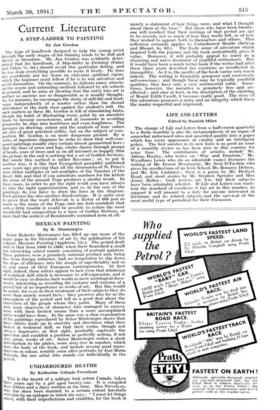MEXICAN PAINTING By R. Montenegro Sefior Roberto Montenegro has filled
up one more of the many gaps in the literature of art by the publication of his volume, Mexican Painting (Appleton, 15s.): The period dealt with is that from 1800 to 1860, when there flourished a small but interesting school mainly consisting of portrait painters. These painters were a genuinely national product and, being free from foreign influence, had no temptation to slip down the slope of efficiency into the slough of superficiality and so to join most of their European contemporaries. At first sight, indeed, these artists appear to lack even that minimum of technical skill which is necessary to self-expression, and it would be easy toodismiss their works as mere sociological docu- ments, interesting as recording the costume and customs of a period but of no importance as works of art. But this would be unfair, for even in their treatment of their subjects they do more than merely record facts ; they preserve also for us the atmosphere of the period and tell us a good deal about the characters of the people whom they paint. Many of them were keen observers of character who managed to convey more with their limited means than a more accomplished artist would have done. In the same way a close examination of the paintings reproduced by Sefior Montenegro shows that these artists made up in sincerity and directness what they lacked in technical skill, so that their works, though not always impressive at first sight, gradually captivate the spectator and establish a position as perfectly serious, if not very great, works of art. Senior Montenegro writes a short introduction to the plates, some sixty-five in number, which form the body of the book, and include several good repro- ductions in colour, notably some after portraits by Jose Maria Estrada, the one artist who stands out individually in the Period.








































 Previous page
Previous page